[comment]: # (mdslides presentation.md --include media) [comment]: # (The list of themes is at https://revealjs.com/themes/) [comment]: # (The list of code themes is at https://highlightjs.org/) [comment]: # (markdown: { smartypants: true }) --- <style type="text/css"> .reveal { font-size: 2.2em; } .reveal .code-wrapper code { white-space: pre; font-size: 2em; line-height: 1.2em; } </style> ---  <img src="media/int.png" width="8%"> DevOps Bootcamp - INT College & UPES University # AWS Lambda 
### Today's agenda - What is AWS Lambda? - Scaling Lambda - Lambda Invocations
### What is AWS Lambda? - Lambda is a compute service that lets you run code without provisioning or managing servers. - Performs all of the administration of the compute resources: scaling, monitoring, logging - Supported runtimes: Node.js, Python, Ruby, Java, Go, .NET - Pay only for the compute time that you consume - Invoke the Lambda functions using an API, or in response to events from other AWS services.
### Lambda concepts - **Deployment package** - Your source code. Lambda supports two types: - A .zip file archive that contains your function code and its dependencies. - A container image (e.g. Docker) - **Runtime** - provides a language-specific environment that runs in an execution environment. - **Scale concurrency** - the number of requests that your function is serving at any given time. - **Destination** - an AWS resource where Lambda can send events from an invocation. You can configure a destination for events that fail processing.
### Scaling The first time you invoke your function, Lambda creates an instance of the function and run it. 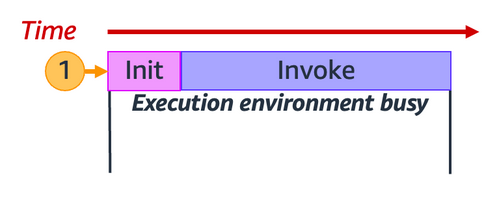
### Scaling When the function returns a response, it stays active and waits to process additional events. 
### Scaling If you invoke the function again while the first event is being processed, Lambda initializes another instance, and the function processes the two events concurrently. 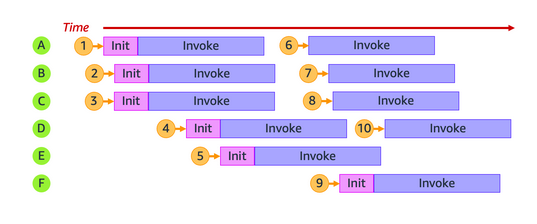
### Scaling As more events come in, Lambda routes them to available instances and creates new instances as needed 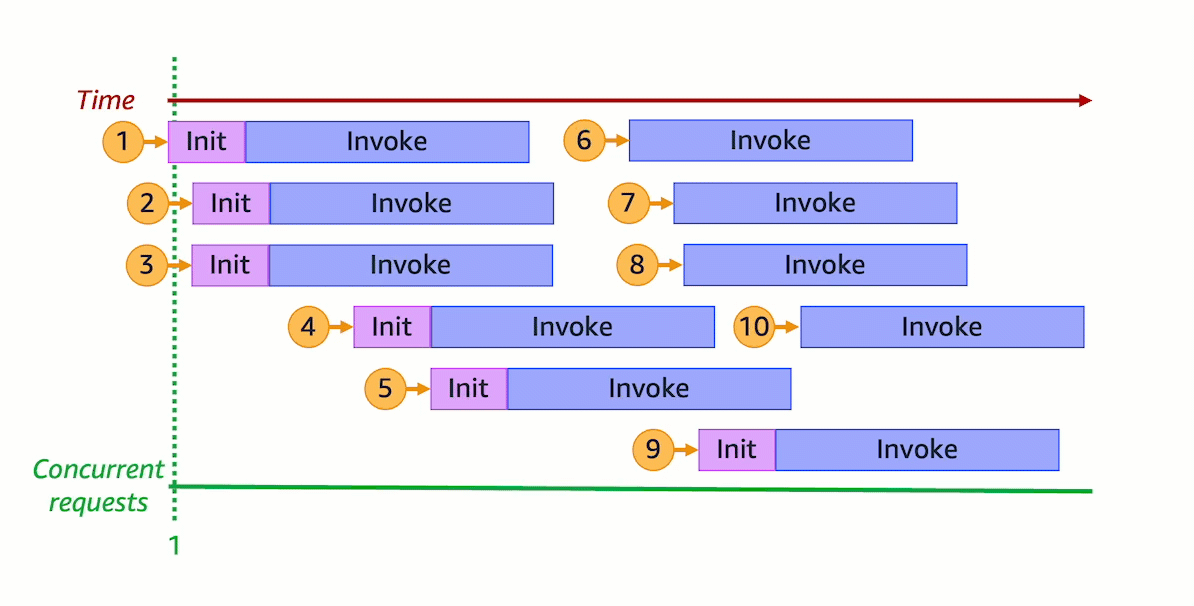
### Scaling When the number of requests decreases, Lambda stops unused instances to free up scaling capacity for other functions  The default regional concurrency quota starts at 1,000 instances.
### Scaling - Reserved concurrency You can configure a **Reserved concurrency** setting for your Lambda functions to allocate a maximum concurrency limit for a function. 
### Scaling - Provisioned Concurrency You can reduce invocation latency by configuring **Provisioned Concurrency** for a function version or alias. 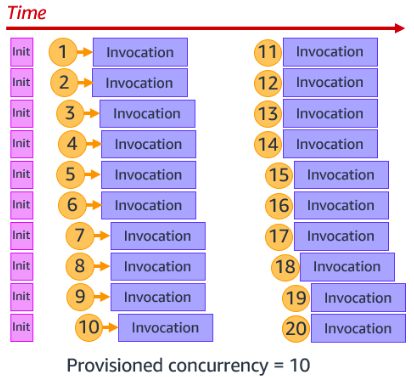
### Scaling - Bust limit 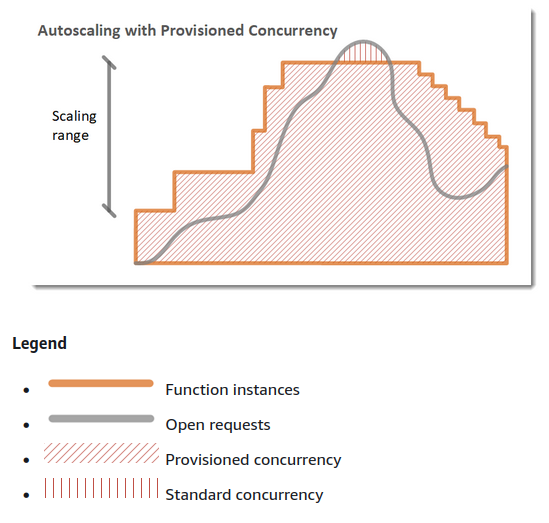
### Lambda Invocation With [synchronous invocation](https://docs.aws.amazon.com/lambda/latest/dg/invocation-sync.html), you wait for the function to process the event and return a response. 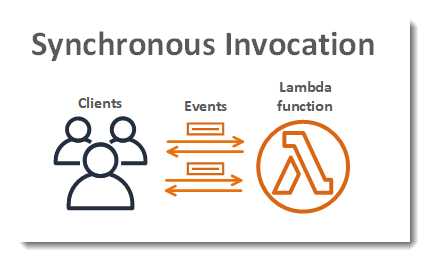
### Lambda Invocation With [asynchronous invocation](https://docs.aws.amazon.com/lambda/latest/dg/invocation-async.html), Lambda queues the event for processing and returns a response immediately. For asynchronous invocations, Lambda handles retries if the function returns an error or is throttled. 
### Destinations - For asynchronous invocation, you can configure Lambda to send invocation records to a queue, topic, function, or event bus. - You can configure separate destinations for successful invocations and events that failed processing. - The invocation record contains details about the event, the function's response, and the reason that the record was sent. 
# Thanks